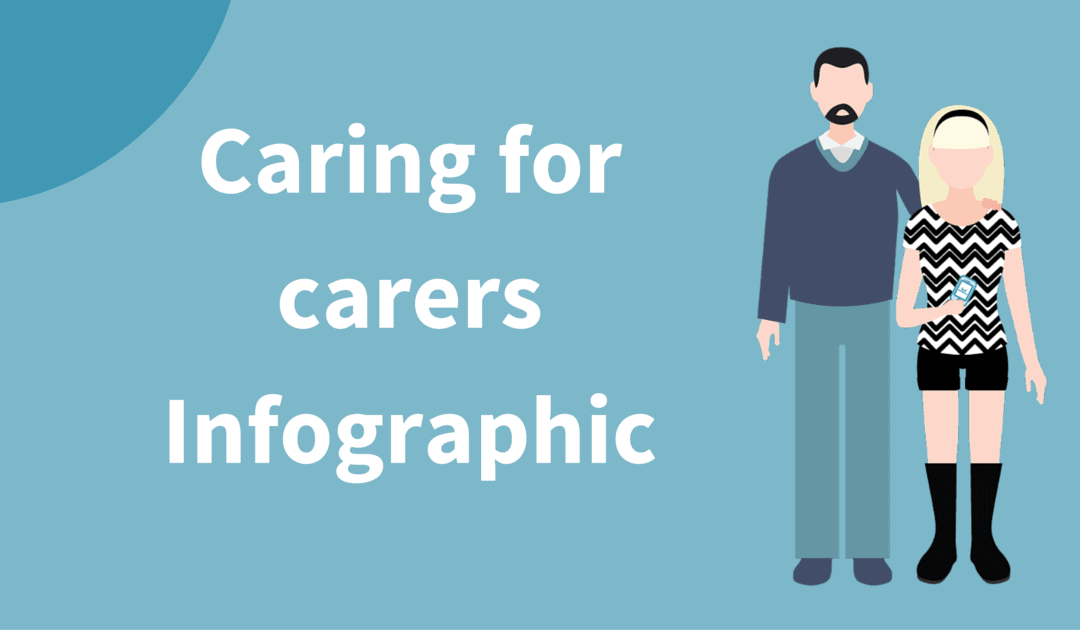
Caring for carers (Infographic)
Family caregivers are essential in helping people suffering from mental illness integrate into the community. However, this role is often challenging and has a huge impact on the caregiver’s personal life.


Family caregivers are essential in helping people suffering from mental illness integrate into the community. However, this role is often challenging and has a huge impact on the caregiver’s personal life.


On the previous blog post, “Transforming health and social care with digital technology” connected health or technology-enabled care (TEC) was defined as the collective term used for telecare, telehealth, telemedicine, mHealth, digital health, and eHealth services. This type of technology can empower patients and carers by giving them more control over their health and social care needs. It can also help individuals to obtain more information regarding their health.
In broad terms, TEC can:
Enables self-management
Nowadays, patients and their carers use technology to research information online, identify treatment options, rate providers, and share their experiences. Healthcare needs to acknowledge that emerging technologies offer a tremendous opportunity to transform the way people engage with their health.
Besides connecting patients and providers, digital technology leads to better outcomes and a more personalised service by educating patients in regards to their health-related issues, enabling remote monitoring, and supporting treatment adherence.
Informs and educates patients and carers
It is estimated that 75% of the UK population goes online for health information. Websites, apps, videos, texts and free online courses are being used to educate and provide information to patients and their family caregivers [1].
Figure 1 displays the most common category of mobile apps: fitness, medical reference and wellness apps, which provide information with other very limited functionalities.
Figure 1. Digital health app category, percentage share in 2014.
The use of digital technology to educate patients and carers is a crucial driver of patient engagement. Surveys suggest that patients are more likely to make better choices and be engaged in their health if they can access information quickly.
Digital technology connects patients and providers, leading to better health outcomes and a more convenient and personalised service, through informing/educating, two-way remote monitoring, and supporting treatment adherence [2].
TEC can help carers understand and support those they care for by:
Facilitates remote patient monitoring (RPM)
Remote monitoring uses technology to monitor changes in patients’ health status outside conventional clinical settings.
Historically, it allows a patient to use a device to perform a routine test and send the test data to a healthcare provider. Initially, it depended on a healthcare provider recommending its use to patients. However, digital technology has increased the potential for remote monitoring and, with the advent of apps and wearables, patients are increasingly bringing the innovation to doctors [3].
New advances in the development of biosensing wearables are spreading their capability beyond simply tracking activity. New devices can monitor a broad range of physiology (from posture to brain activity) and convert this information into outputs, through advanced connectivity and computing power.
Biosensing wearables can support people with chronic conditions, automating monitoring and detecting real time changes in an individual’s health status. Data from biosensing wearables can be uploaded to an Electronic Patient Record (EPR) and this information can be used to display an overview of a patient’s medical history in real-time, supporting early diagnoses and early intervention.
If a negative change occurs, patients, family caregivers and healthcare providers can be alerted quickly, preventing emergency admissions.
Increases treatment adherence
In bad cases, failure to follow treatment can cause a patient’s condition to deteriorate, leading to an increased likelihood of hospital admission, permanent disability, or death. Electronic reminders and alerts, via text SMS or apps, can remind patients to follow their treatment regimens, thus improving health outcomes.
The World Health Organisation has calculated that adherence to long-term therapies in developed countries is around 50%, and is even lower in developing countries [4].
In the UK, between one-third and half of all medicines prescribed for long-term conditions are not taken as recommended. It is estimated that the cost of unused or unwanted medicine is around 100 million GBP per annum [5].
Improved adherence allows healthcare providers and pharmaceutical companies to obtain a better understanding of the impact of drugs, including any complications or drug interactions, providing useful data for research. An increasing number of pharmaceutical companies are investing in digital TEC projects to increase patient adherence to the drugs they produce. Likewise, patients and carers are increasingly using digital health software to register and monitor medication intake [6].
References:
[1] Valuing Carers 2011: calculating the value of carers’ support, Carers UK and academics at the University of Leeds, May 2011.
http://circle.leeds.ac.uk/files/2012/08/110512-circle-carers-uk-valuing-carers.pdf
[2] Putting patients first. The NHS England business plan for 2013/14 and 2015/16. https://www.england.nhs.uk/wp-content/uploads/2013/04/ppf-1314-1516.pdf
[3] Primary care working differently: Telehealth and telecare –a game changer for health and social care, Deloitte UK Centre for Health Solutions, December 2012. http://www2.deloitte.com/content/dam/Deloitte/uk/Documents/life-sciences-health-care/deloitte-uk-telehealth-telecare.pdf
[4] Medication Adherence: WHO Cares? Mayo Clinic 2011. http://www.ncbi.nlm.nih.gov/pmc/articles/PMC3068890/
[5] Aston Medication Adherence Study, Aston University. See also: http://www.aston.ac.uk/lhs/research/health/pharmacy/adherence/
[6] Mobile apps, fighting for patient adherence, Mobile health global, December 2014. See also http://www.mobilehealthglobal.com/in-the-news/news/109/mobile-apps-fighting-for-patient-adherence
[7] Psychological Therapies, Annual Report on the use of IAPT services: England – 2013/14 Experimental Statistics, Health and Social Care Information Centre, September 2014. http://www.hscic.gov.uk/catalogue/PUB14899/psyc-ther-ann-rep-2013-14.pdf